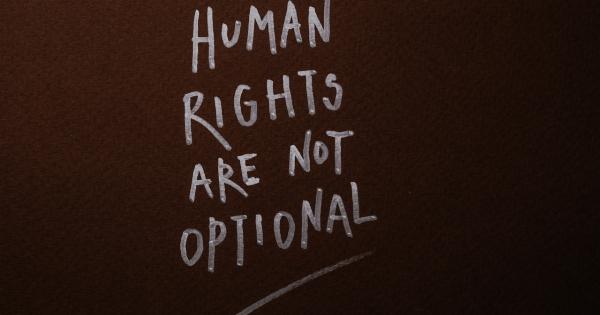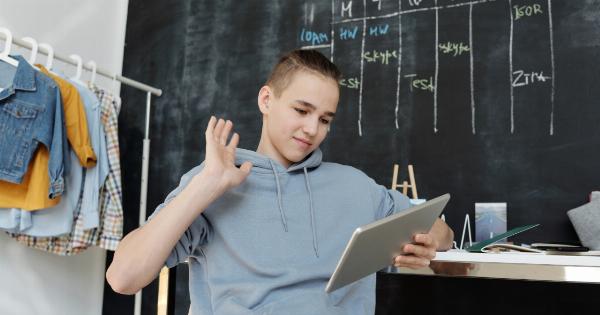Pontius Pilate, the Roman governor who presided over Jesus’ trial and crucifixion, was renowned for his use of subtle hand gestures during important proceedings.
While seemingly innocuous at first glance, these gestures held deep symbolic meanings that conveyed Pilate’s intentions, emotions, and political affiliations. In this article, we delve into the hidden meanings within Pontius Pilate’s hand gestures, shedding light on the complexities of his character and the historical significance of his actions.
The Significance of the Raised Hand
One of the most prominent and recurring hand gestures utilized by Pontius Pilate was the raised hand. This gesture served multiple purposes, often functioning as a symbol of authority and power.
When Pilate raised his hand during Jesus’ trial, it signified his control over the proceedings, expressing his position as the ultimate decision-maker. Additionally, the raised hand indicated Pilate’s ability to grant clemency or impose punishment, creating an atmosphere of suspense and uncertainty.
The Subtle Palm Rubbing Gesture
Another hand gesture employed by Pilate was the subtle rubbing of his hands together. While some may interpret this gesture as a mere nervous tic, it actually carried a profound meaning during Jesus’ trial.
Pilate’s palm-rubbing symbolized his attempt to absolve himself of any responsibility or guilt regarding Jesus’ fate. By physically attempting to wash away his involvement, Pilate attempted to distance himself from the moral weight of the decision, highlighting his complex role as a political figure torn between public opinion and personal convictions.
The Palm-Outward Gesture
When facing a tumultuous crowd during Jesus’ trial, Pontius Pilate often extended his hand with the palm facing outward. This gesture was a plea for calm and order, showcasing Pilate’s desire to avoid unnecessary violence or unrest.
By displaying his open palm, Pilate hoped to signal a willingness to compromise and negotiate, emphasizing his diplomatic skills and aspirations for peace. However, this gesture also revealed Pilate’s awareness of the volatile political climate and his need to maintain stability in a challenging environment.
The Finger Pointing Gesture
Occasionally, Pontius Pilate resorted to finger pointing as a means of directing attention or placing blame. This gesture was especially prevalent when Pilate confronted religious leaders who accused Jesus of blasphemy.
By pointing his finger, Pilate sought to redirect responsibility and shift the focus onto others, avoiding personal accountability. This hand gesture showcased Pilate’s shrewdness and his willingness to manipulate narratives to suit his political objectives.
The Clasped Hands Gesture
At certain critical moments during Jesus’ trial, Pontius Pilate would clasp his hands together, signifying contemplation and internal struggle.
This gesture conveyed the turmoil and conflicting emotions Pilate experienced while making pivotal decisions. By physically interlocking his hands, Pilate demonstrated the weightiness of his choices and the moral dilemmas he faced.
This hand gesture exposes the inner battle between his loyalty to the Roman Empire and his recognition of Jesus’ innocence, highlighting the complexities of his character.
The Fisted Hand Gesture
When confronted with opposition or insolence, Pontius Pilate would sometimes clench his hand into a fist. This gesture represented his frustration, anger, and determination to assert his authority.
The fisted hand indicated Pilate’s resolve to maintain control and quell any challenges to his rule. This particular hand gesture showcased Pilate’s authoritarian tendencies and the lengths he was willing to go to preserve order in a volatile political landscape.
The Hand-on-Heart Gesture
During more intimate and personal moments, Pontius Pilate would occasionally place his hand on his heart. This gesture symbolized sincerity, trustworthiness, and even vulnerability.
By physically connecting with his own heart, Pilate aimed to foster empathy and convey a sense of authenticity to those around him. This hand gesture exhibited Pilate’s capacity for empathy, revealing a more compassionate aspect of his character that is often overlooked in historical accounts.
The Open Palms Gesture
In instances where Pontius Pilate sought to demonstrate transparency and openness, he would extend both his hands with palms facing upward.
This gesture aimed to dispel any doubts or suspicions, emphasizing Pilate’s innocence and fairness in his dealings. By exposing his open palms, Pilate invited trust and conveyed an image of integrity.
However, this gesture also highlights the cunning nature of Pilate’s persona, as he strategically employed it to maintain a favorable public image while preserving his own interests.
The Stroking Gesture
At times, Pontius Pilate would stroke his beard or face with his hand, particularly when faced with difficult decisions or challenging conversations. This gesture indicated his contemplation, strategic thinking, and calculation of potential outcomes.
By physically touching his own face, Pilate revealed his introspective nature and his commitment to weighing the consequences of his actions. This hand gesture provided insights into Pilate’s thought process and his determination to navigate treacherous political waters.
The Crossed Fingers Gesture
A lesser-known hand gesture utilized by Pontius Pilate was the crossing of his fingers. This gesture, often concealed from public view, represented deceit and duplicity.
Pilate would subtly cross his fingers to affirm secret agreements or give false assurances while maintaining an outward appearance of honesty. This hand gesture reveals Pilate’s willingness to bend the truth and engage in subterfuge to achieve his political objectives, exposing the depths of his Machiavellian nature.
Unlocking the Secrets of Pontius Pilate’s Hand Gestures
Unraveling the hidden meanings within Pontius Pilate’s hand gestures allows us to better understand the complexities of his character and the political landscape in which he operated.
Each gesture provided insights into his motivations, emotions, and strategies, shedding light on the delicate balance he sought to maintain between Roman authority, public sentiment, and personal ethics. Exploring these gestures not only adds depth to our knowledge of Pilate’s role in Jesus’ crucifixion but also offers valuable lessons on the power of nonverbal communication and its impact on historical narratives.





























